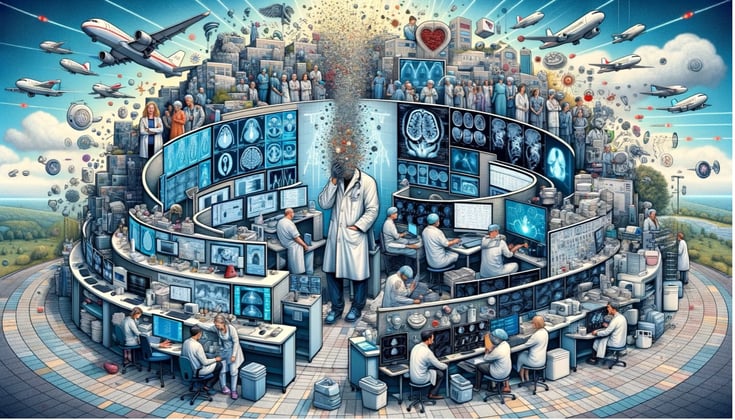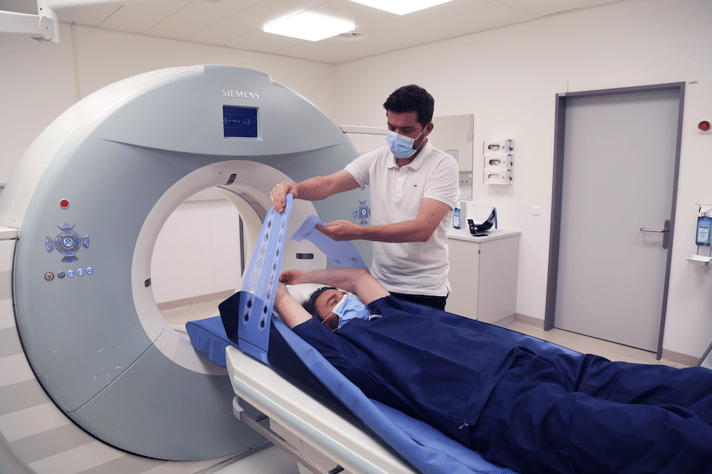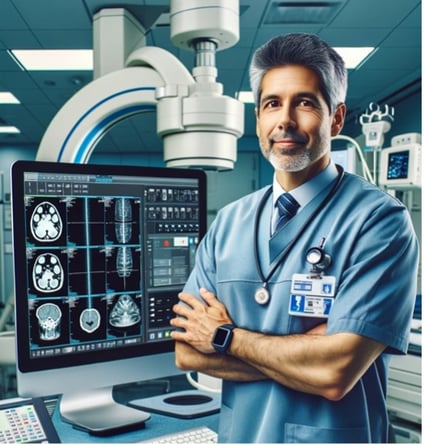In the ever-evolving landscape of healthcare, the radiology departments have emerged as vital hubs in diagnosing and treating a myriad of medical conditions. The digital age has ushered in ground-breaking advancements, particularly in the form of Artificial Intelligence (AI), which promises to reshape the way radiology departments operate all around the globe. As patient volumes rise due to the aging of population, and the demand for quicker diagnosis accompanies its growth, radiology departments face the pressing need for workflow standardization, efficiency, and safety. Simple, templated workflows, and the right management tools are key to meeting these challenges head-on.
The Problems to be solved
Radiology departments worldwide are grappling with an ever-increasing number of patients seeking diagnostic and/or preventative medical imaging services. This surge is due to various factors, including population growth, aging of said population consequence of better life standards and more efficient healthcare, and greater awareness of the importance of early detection of malignancies. Allied to this growing, demanding, fast fire-spreading issue, is the world economic crises motivated by wars and Covid-19, and lastly the lack of sufficient manpower to run the oceanic increase of radiologic departments providing private and public examinations around the world. Consequently, radiology departments find themselves inundated with cases, often leading to long waiting times and a bottleneck in safe, efficient, and caring service delivery.

Figure 1: Challenges in radiology - visualized by AI
AI – the Jack of all trades?
This is where AI comes into play. Artificial Intelligence has made substantial strides in the field of medical imaging. Machine learning algorithms can now analyse medical images faster and with impressive accuracy. AI can swiftly detect abnormalities, assist in diagnosing diseases, and even predict patient outcomes. With AI's assistance, radiologists can process a higher volume of cases in a shorter time, significantly reducing waiting times and improving patient care. AI also plays a fundamental role on patient output and patient care, as most MRI, CT, and X-ray systems are now equipped with AI algorithms that allow radiographers to scan quicker and with better image quality, allowing for more patients to be seen, and more time to be spent with them during their appointments.
Bringing it into the real world
However, integrating AI into radiology workflows is not without its challenges. Radiologists, radiographers, and all ancillary staff must adapt to new technologies and learn to trust AI as a valuable aid rather than a replacement. This transition can be made smoother by implementing simple standardized workflows that incorporate AI seamlessly, avoiding the fear of change and substitution; and that’s the proposition.
Radiology departments must then embrace simple, templated workflows to harness the full potential of AI and manage the influx of patients efficiently. Simple, templated workflows, provide a structured approach to patient care, patient positioning, image acquisition, imaging processing, and exam reporting. They help ensure consistency and reduce variability, which is crucial in diagnostic accuracy. Templated workflows across various hospitals/clinics within the same group/trust is also key as the amount of AI algorithms and tools made available in the market nowadays for the exact same outcome, can and will become a dauting task to manage.
Simple templated workflows can be tailored to specific types of examinations/modalities, such as X-rays, CT scans, or MRIs. Standardized procedures guide radiographers and radiologists through each step of the process, reducing the margin for error. This not only accelerates the examination process but also ensures that all relevant information is captured consistently throughout the patient journey and life.
Moreover, these workflows facilitate the integration of AI algorithms seamlessly. AI can analyse images more effectively when it knows what to expect and where to look. Simple templated workflows provide the structured framework necessary for AI to function optimally, enhancing its diagnostic capabilities. These types of workflows should be written in tandem with risk assessments and policies and with the input of the manufacturers of the scanners we use as well as the insights of the “boots on the ground” i.e., the radiographers and radiologists that will be using the tools.

Figure 2: The low-tech aspect of patient positioning still has a decisive influence.
Tools and equipment for enhanced patient care
It is all about having the right tools for the challenging situations we are facing. Radiology departments often face challenging situations especially when dealing with critically ill or uncooperative patients. In such cases, having the right tools at their disposal can make all the difference. For instance, advanced positioning aids and patient-friendly equipment can help ensure that imaging procedures are comfortable and efficient for the patient. This not only reduces patient anxiety but also improves the quality of the images obtained. Additionally, real-time feedback systems can assist radiographers in obtaining optimal images on the first attempt, minimizing the need for retakes, and reducing radiation exposure. On top of this, efficient, reliant, assertive, effective, and kind communication, play a cardinal role on overcoming any challenges in the radiology department. Furthermore, radiologists require intuitive reporting and communication tools to convey findings to referring physicians and patients effectively. These tools should seamlessly integrate with templated workflows and AI systems, enabling a smooth transition from image acquisition to result delivery.
The right tool will be the one that encompasses all aspects of the patient journey within our radiology departments. A kind of “does it all” tool that is incorporated or embodies the simple templated workflows mentioned above.
 Figure 3: Radiology staff is hard to come by
Figure 3: Radiology staff is hard to come by
Addressing the Shortage of Skilled Radiology Staff
The worldwide shortage of skilled radiology staff is also a looming concern that can be solved by these templated workflows. Radiologic technologists and radiologists are in high demand, but the supply is not keeping pace. As a result, radiology departments are increasingly relying on assistants and other support staff to perform patient-oriented tasks like positioning and safety screening without appropriate or intensive training and adjuncts. If we do not manage, as a community, to revert this tendency, accidents and unforeseen problems will keep emerging. Highly skilled staff will be overworked and overstretched, doing more than a million things at the same time, leaving basic (not so basic) tasks like positioning patients and run their safety questionnaires to ancillary staff.
So, to streamline workflow and maximize efficiency, while this tendency does not revert, it is imperative to simplify and standardize all the tasks within the radiology departments. Training programs and equipment should be designed with simplicity in mind, allowing assistants to quickly become proficient in their roles, and fully able to support the radiographers and radiologists. This not only alleviates the burden on the radiology staff but also ensures that patient care remains of the highest quality.
In conclusion, the radiology department of the future must embrace workflow standardization, encompassing AI integration, and the adoption of the right tools to thrive in a healthcare landscape characterized by higher patient volumes and the need for quicker exams and processes. Templated workflows provide the structure necessary for efficient AI integration, while simplicity and the right tools are essential for addressing challenging patient situations and the global shortage of skilled staff. By prioritizing these aspects, radiology departments can continue to provide high-quality care while adapting to the changing healthcare landscape.
Samuel Oliveira
29.10.2023
Samuel Oliveira is a passionate radiology professional, MRI safety officer, opinion leader, and innovator. As the founder and CEO of Everything MRI, as well as the founder of the London MRI Leads Group, he is committed to changing and improving the MRI world step by step.
